|
SBKA member Lynne Ingram reports from the front line fighting Asian hornets in Jersey
Gathered in a car park with fantastic views of France, Alderney and Sark, teams of hornet hunters received instructions on today’s tasks. We were about to start gathering data on hornet flight speed, relationship between feeding time and time spent at the nest. Three teams had bait stations at different distances from a known nest, and one team was filming and recording the nest itself. We timed hornets that we had marked the day before, as they flew between the bait station and the nest. Hornets are docile while feeding on a bait station so that it is fairly easy to catch them and mark them, with no need for veils or gloves. However the bait stations have been inundated with hundreds of wasps that flock in a feeding frenzy (and crawl up your trouser legs!), so we have been wearing veils to work which makes it harder to spot the hornets on the wing. After we finished that task and after a debrief, some of us had the opportunity to get close up and personal to a hornet nest some 50 feet up in a tree. It was fantastic to be able to see them in their nest so close up, and we weren’t too bombarded by them! The worst thing was getting into the hornet suits, which are 8mm thick so that the hornet sting cannot penetrate them. You do need someone to help you get into it. The Chief Minister of Jersey also came along to see the nest, and to get dressed up in a hornet suit We headed off to our site in the Trinity area and put out some new bait stations after timing flights and getting flight directions. Now we are about two minutes away from the nest (about 200 metres), so tomorrow we will place a bait station about 400 metres away so that we can get a back bearing. We also put a new bait station on a line between this first site and the apiary that has hawking hornets. We now seem to spend hours on Google Earth plotting sightings, flight lines and bait station positions, but it is not always possible to place the bait station in the ideal place. Today we had to work around a horse that was allergic to wasp stings, and a gardener trimming a huge hedge. We leave laminated sheets at the bait stations that explain what it is, and which also gives contact numbers Great news to end the day – another nest was found, this one at the foot of a bramble bush. So our initial thoughts that Asian hornets only nest 50 feet up in a tree is proving to be incorrect. We have found them in trees, hedges, houses, roofs, and now at ground level. SBKA member Lynne Ingram reports from the front line fighting Asian hornets in Jersey:
Day 2 – Training – and a disappointment We were up early checking hornet traps around the Clubley Estate area, and found a number of really big hornets in two of the traps. We gathered some of these to tag and release later. We then headed to the Department of the Environment so that we could be trained in how to attach tags to hornets, and how to use radio telemetry to track the tagged hornets. Peter Kennedy and Jess Knapp from Exeter University, who have been in Jersey for a couple of weeks, were doing the training. We divided into two groups, and I started with radio telemetry. The equipment consists of a receiver that you hang round your neck, and an attached aerial that you carry and move to increase signal, or to identify the direction of your target. Firstly you match your tag to your receiver, and fine-tune things, before attaching your aerial. The tag emits a regular signal that you can hear, and as you get nearer to your target you can increase sensitivity, allowing you to close in precisely. We went out to practice after Jess had hidden the tag in trees and hedges. It took a bit of getting used to but we managed to track the tags, and it was clear that radio telemetry is a really useful tool in the search for Asian Hornets. Yesterday’s nest find was a good example of its successful use. My next session was learning how to tag the hornets - luckily we practiced on dead ones! Before tagging, the hornets are weighed to make sure that they are sturdy enough to carry the tag (350-400mg). Live hornets are generally not that keen on having a tag tied around their middle, so the first stage is to chill them in ice for 10 minutes. This knocks them out enough for you to secure them to a small perspex plate with a couple of slots cut out, so that you can tie the tag around their petiole. The plate means that the hornet is secured on one side, while you work on the other side – well away from the sting! It is quite fiddly, and you are trying to work as quickly as you can before the hornet comes round. Practice does make perfect and Peter was able to tag a live hornet in a few minutes. The tag weighs between 230mg and 280mg and has a 10cm antenna, so it is a huge weight for the hornet to carry. After a short while the hornet comes to, and starts moving around, fanning its wings, and trying to gnaw at things. It is at this point that you are trying to glue a coloured number to it’s thorax, so tricky work! Once this is done, the hornet is released from the plate into a small, then bigger flight cage, so that she can warm up and get used to the tag. In the afternoon, we took the two tagged hornets from the Clubley Estate back to be released and then followed, hopefully, to the nest. This proved to be an extremely difficult task as the buildings interfered with the radio signals, and also made it tricky to follow the hornets directly. Peter and Jess had an aerial each so they could follow both hornets, and local homeowners allowed us to enter gardens and back yards to get better views or angles for the aerials. After some hours we had followed one hornet to a tree in an area previously identified as a likely nest spot, and had a strong and precise signal from her, but were unable to locate her or a nest. We had a weak signal from the other one. We had to call it a day as it was getting late, but Peter resumed the search in the morning, and unfortunately found both hornets dead – perhaps from cold or exhaustion. It was disappointing after everyones hard work, but we learnt a lot from the experience. Here is a link to Peter’s research: https://www.nature.com/articles/s42003-018-0092-9.pdf SBKA member Lynne Ingram reports from the front line fighting Asian hornets in Jersey: Day 1 – Meeting Asian Hornets & Nest 29 Arrived in Jersey last night to be met by Judy – holding a picture of an Asian Hornet of course. Met some of the hornet hunter team during the evening – including two beekeepers from Devon who were learning and helping out. The exchange of ideas, information and plans for today went on until late. Started the day at The Bee Field – Jersey Beekeepers’ Association Apiary – where we were engaged in trying to kill the occupants of an entire hornets nest contained in a dustbin. The nest had been cut out of a tree, so that it could be dissected and its stage of development analysed. We were using carbon dioxide so that the nest can be dissected later without people having contact with the insecticides normally used to kill hornets. Although it initially seemed to have been successful, the ‘dead’ hornets soon revived, and the dustbin lid was swiftly replaced! Plan B was discussed, but we had to leave the bee field to head up to the Bonne Nuit area where a beekeeper had reported many large hornets in his apiary. Traps and open bait stations had been out for days, narrowing down the search area. Arriving on site, we saw around 12 hornets at a time landing and feeding on a stack of old frames. This was my first sight of Asian hornets and they really cannot be mistaken for anything else! Appearing large and black in flight with a distinctive buzz, once they have landed you can see their distinctive markings and can easily collect them in pots for marking or tagging. Peter Kennedy and Jess Knapp from Exeter University were already at the site and had tagged some hornets. Once the hornets had recovered in a flight cage from being tagged, and armed with a radio telemetry aerial, Peter released the first hornet. Unfortunately she struggled to fly with the weight of the tag, and got soaked in the wet grass, so we collected her and put her back in the flight cage to recover. We then released the second hornet, and followed the signals from her transmitter through fields and woodland until she led us to the nest (Number 28) – which was spotted by Jess high in a sycamore tree. We celebrated our success with a cup of tea provided by the delighted householder. Meanwhile another householder near Grouville had spotted hornets going in and out of his garage roof, and this nest, (Number 29) was confirmed later in the day by other team members. Pest control will now be called in to destroy both of these nests. SBKA members Lynne Ingram (Taunton) and Anne Rowberry (Frome) are working with scientists from Exeter University and Jersey beekeepers this week in the fight against deadly Asian hornets which are wreaking havoc on honeybees in the Channel Isles.
They’re part of a team using ground-breaking radio telemetry developed by Dr Pete Kennedy to track the deadly and invasive Asian hornets back to their nests where they can be destroyed. Not only are they helping the beleaguered beekeepers of Jersey, but also they will be very well placed to provide support to local beekeepers if the need arises. The situation in Jersey is hugely concerning; the first Asian hornet was spotted there two years ago and they have spread so rapidly that last week alone they destroyed seven honeybee colonies. [In France the first Asian hornet was spotted in 2004 and so far this year thousands of nests have been removed.] Lynne and Anne will return ahead of the UK’s first Asian hornet week - September 10-16 - which is timed to coincide with the last chance to prevent the emergence of new Asian hornet queens. We urge all beekeepers, gardeners, wildlife lovers – in fact everyone! – to join in and report any any sightings, preferably with a photo, to [email protected] Asian hornets are slightly smaller than native European hornets, have a distinctive black/dark brown thorax; brown abdominal segments with the fourth segment almost entirely yellow-orange, brown legs with yellow ends, a black head and an orange-yellow face. This year's County Honey Show, held as part of Taunton Flower Show on Friday and Saturday, attracted more competition entries, thousands of interested visitors and facilitated lots of bee-talk.
It was great to see entries from Exmoor, Minehead, Axbridge, Highbridge, Chard and even Devon, as well as from Taunton and the surrounding area. Over all entries were up by about 30 which made the competition stronger as well as giving a lot more exceptional exhibits to admire. One of the youngest competitors was 19-year-old Jacob Trood (grandson of show vetran Neil!) who entered a fantastic array of artworks - one of which the judges recommended that he enter at the National Honey Show. Thanks must again go to Taunton Division whose members staged, ran and then dismantled the hugely popular feature over a very hot couple of days. Anne Pike, Chairman of SBKA The Asian hornet watch week is timed to coincide with when Asian hornets start hawking honeybees at hive entrances; the early autumn is the last chance we will have to prevent the emergence of new Asian hornet queens.
#AsianHornetWeek aims to encourage beekeepers to spend several one-hour sessions looking out for Asian hornets at their apiaries during fine weather. If you pin a 'skirt' around your hives you will force Asian hornets to hawk in front of the hive rather than ambushing bees from underneath and you can see if your bees are under attack. For more information: https://www.bbka.org.uk/asian-hornet-week WARNING!
Protect your hives from wasps! A number of Somerset beekeepers are losing colonies to wasps and we suggest reducing the entrance to just one bee-width and putting out wasp traps. If you lose a colony to wasps you may want to move your other hives out of the apiary for the rest of the summer. WARNING! Don't use varroa treatment when the temperatures are so high - it could harm the queens. If you've harvested your honey, it's tempting to start making preparations for the winter. But hold off if you can until it's not so hot. |
Archives
March 2024
Categories
All
|
Somerset Beekeepers Association Charity © 2021 Registered CIO Charity 1206483
Affiliated to the British Beekeepers Association
Click here to view our Privacy Policy
Affiliated to the British Beekeepers Association
Click here to view our Privacy Policy

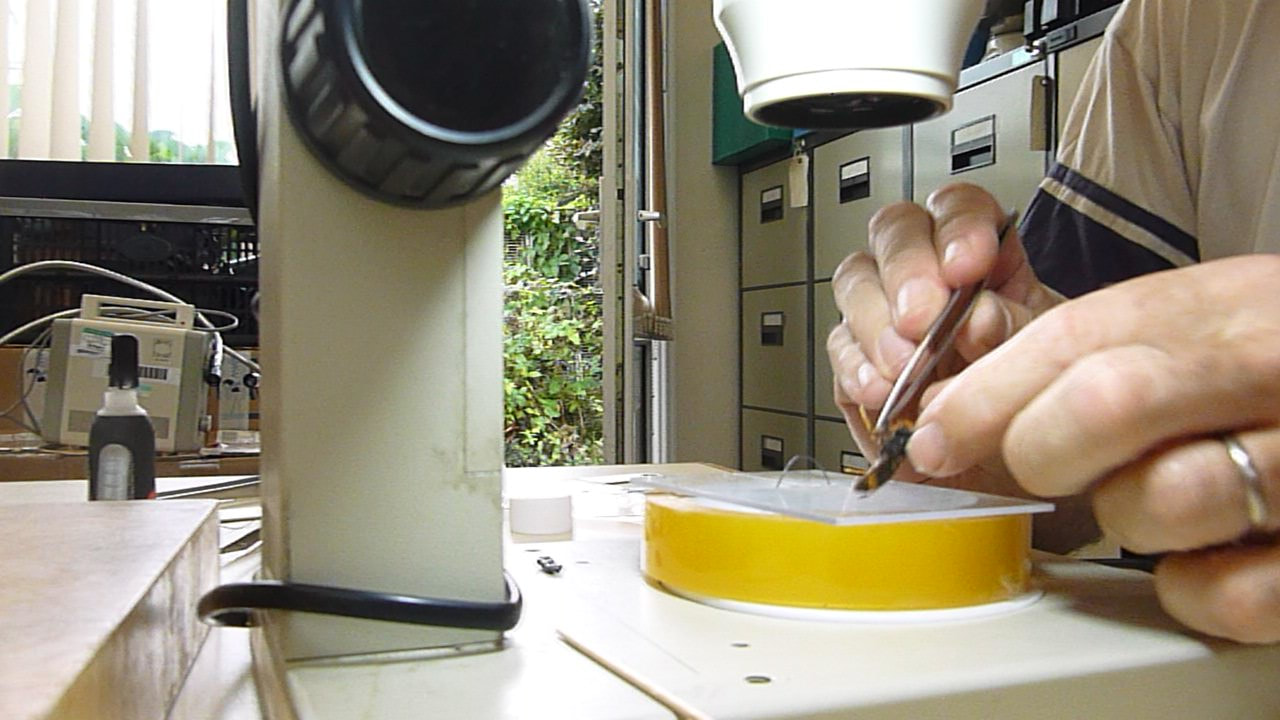
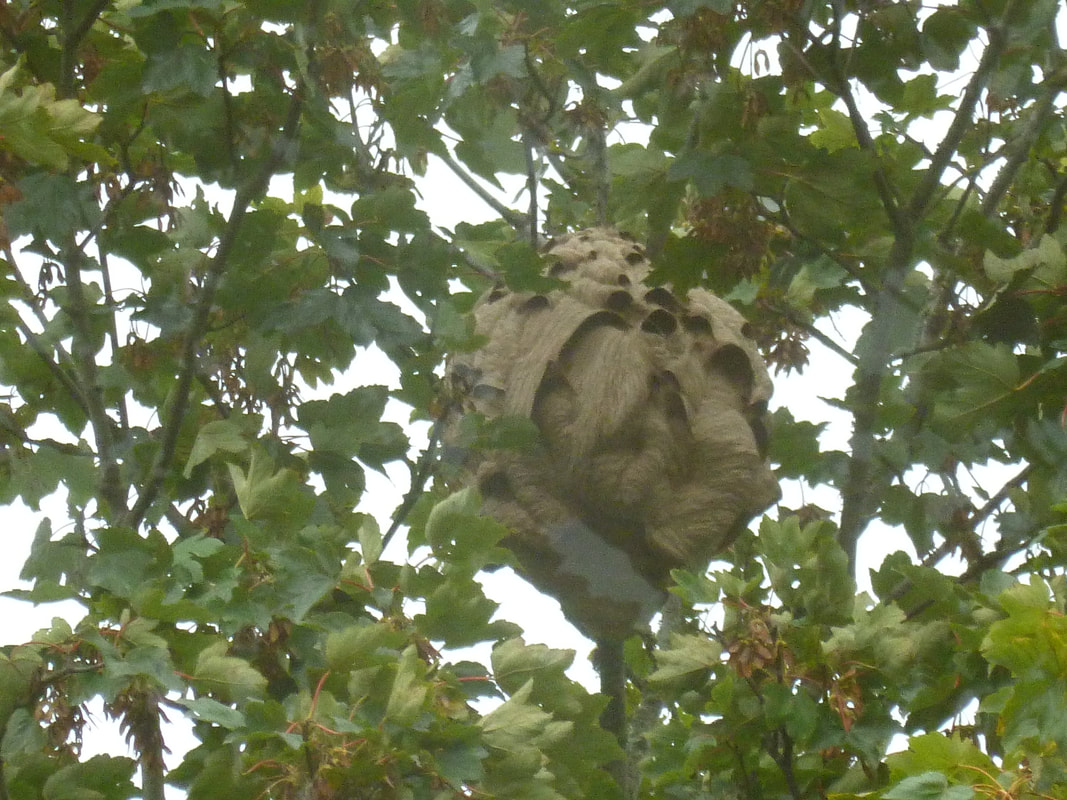
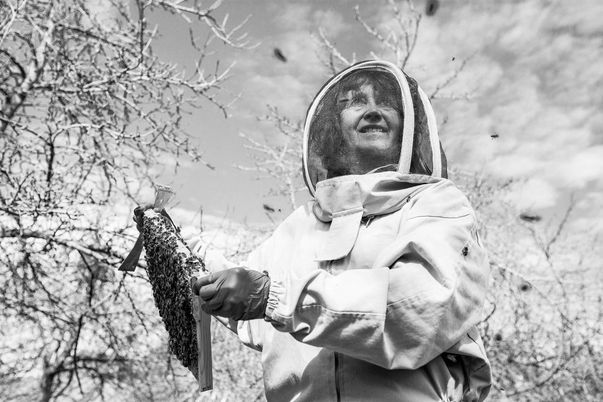
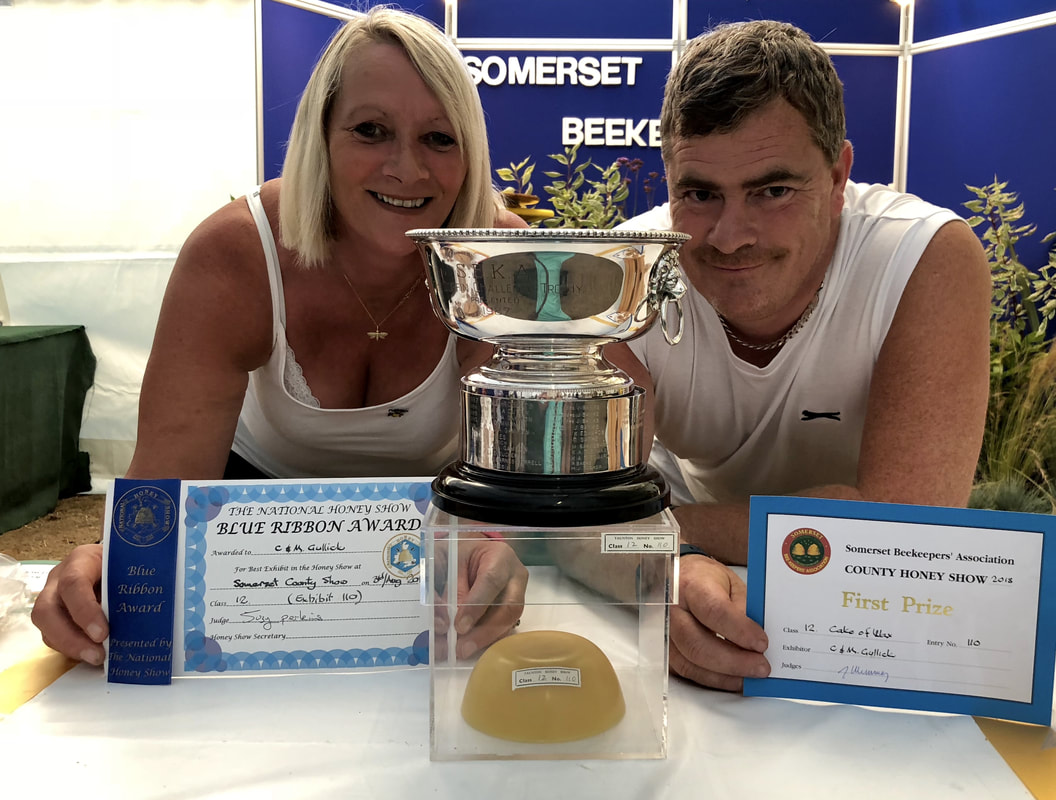
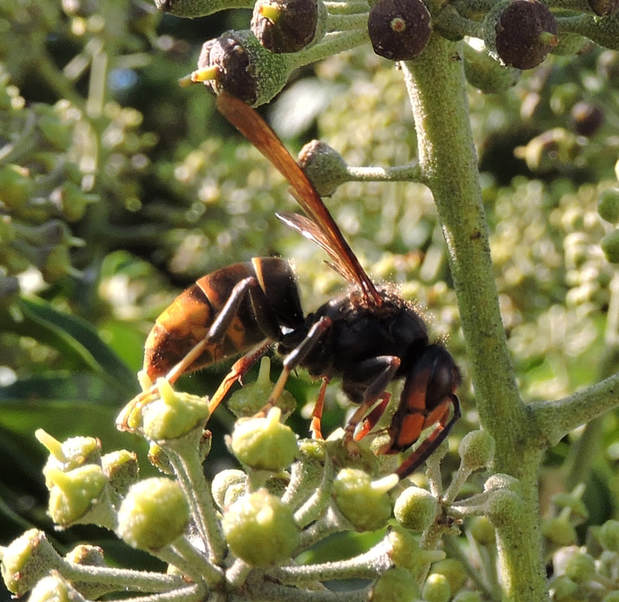
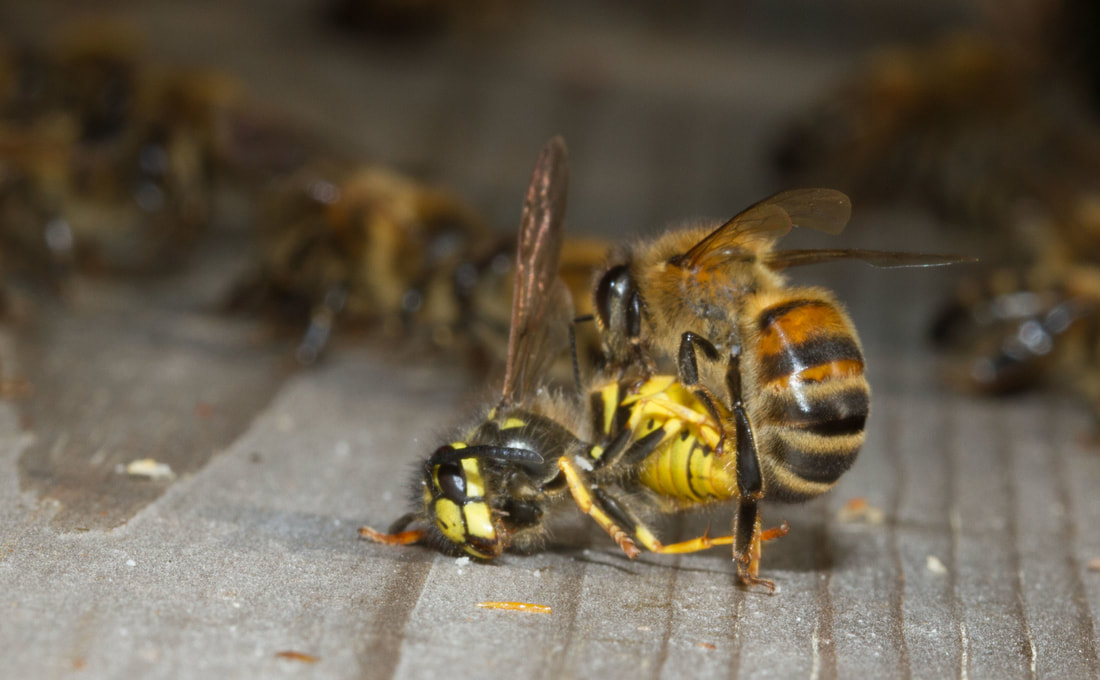
 RSS Feed
RSS Feed
